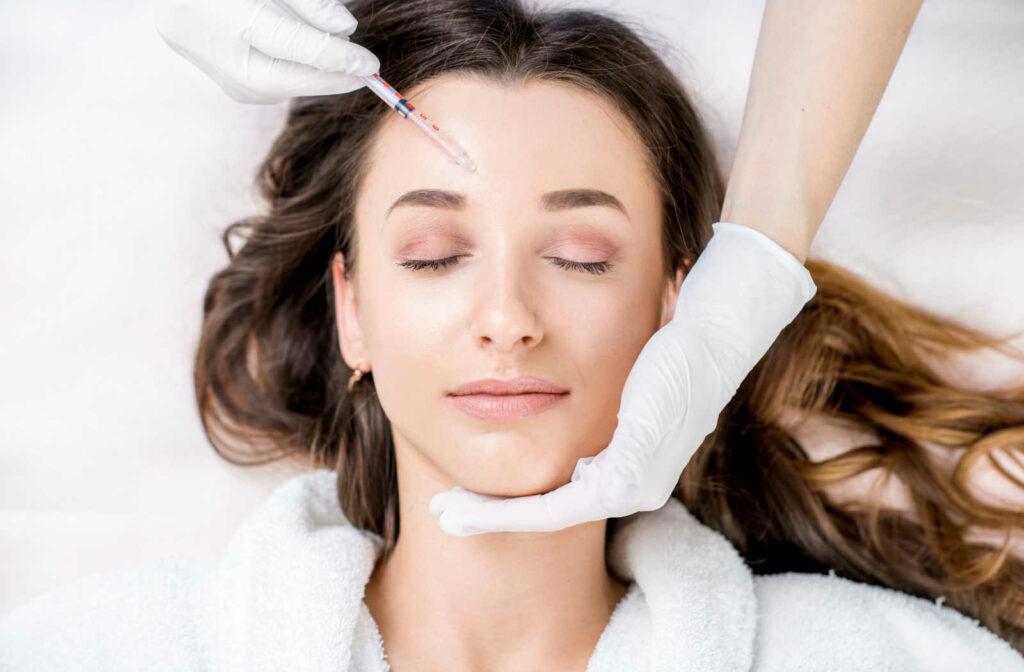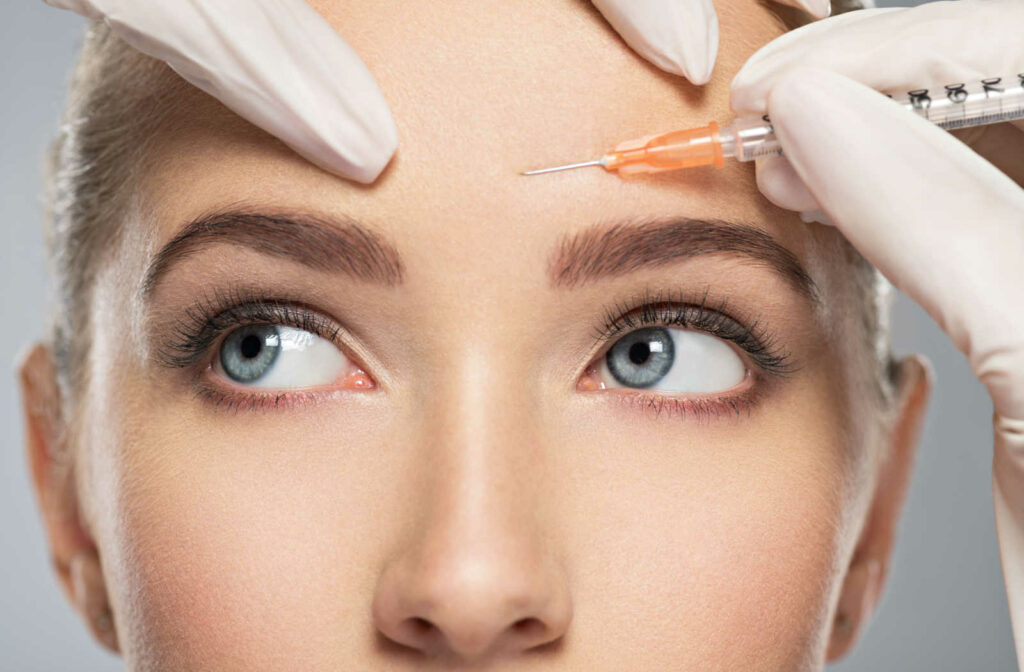
Reviewed by: John P. Fezza, M.D.
A common part of aging is undesirable lines or wrinkles. Botox or dermal fillers can be a great solution to improve our appearance and boost our self-confidence. Even though botox is a relatively simple cosmetic procedure, it still needs to be performed by a qualified professional. Additionally, there are recommended “dos and don’ts” for Botox aftercare that your provider will let you know about.
What Is Botox
To understand botox aftercare, first, let’s take a look at what this treatment is. Botox contains the bacterium Clostridium botulinum. When injected in small, therapeutic concentrations, it works by paralyzing the nerves in the targeted muscles. The goal is to cause wrinkles to smoothen out because the muscles cannot contract.
Getting Botox is typically a quick procedure that doesn’t require anesthesia or numbing. The doctor uses a tiny needle and injects the toxin into specific muscles. Most people only feel mild discomfort at the injection site temporarily.
Typically you’ll see results within the first 2 weeks after the treatment, and they can last for several months. Keep in mind that factors like the targeted area or the amount of botox used can cause the timing to vary slightly.
Common Uses
Botox was originally approved by the FDA for therapeutic use in 1989. Therapeutic uses it was approved for include things like eye-muscle disorders, uncontrollable blinking, or crossed eyes. But in 2002, the FDA approved it further for cosmetic use.
Common cosmetic uses for Botox include:
- Crow’s feet
- Frown lines
- Sun damage or gravity-caused wrinkles
- Lip and chin lines
- Corners of mouth
- Neck
What Not to Do After Botox
Generally, there aren’t any severe side effects after getting a Botox treatment. There are a few things to keep in mind to ensure you get the best results possible.
After Botox, you should not:
- Exercise or perform any strenuous activities for at least 3 hours
- Drink excessive alcohol for at least 24 hours (your doctor will also likely recommend avoiding alcohol for a week before the procedure as well)
- Avoid sleeping on or rubbing your face
- Get facials, face massages, or other beauty treatments for at least 2 weeks after botox injections
- Be in direct sunlight for at least 2 weeks
Aftercare Tips
Before and after the procedure, your doctor or nurse can review all the pertinent aftercare information to ensure everything heals properly. But here are a few general aftercare tips to get you started:
- Gently exercise your face after the treatment. A good way to do this is by frowning and smiling, but don’t push or massage the skin. Doing this typically helps the effect of Botox show up quicker.
- Stay upright for at least a few hours after the procedure.
- Follow all your doctor’s instructions.
Potential Side Effects
Although it’s rare for the toxin in botox to spread throughout your body, there is still the potential for side effects. If you notice any of the following symptoms, it’s important to see a doctor right away:
- Sudden muscle weakness
- Trouble holding a conversation or swallowing
- Vision or breathing problems
- Loss of bladder control
Other more common but less serious side effects include:
- Minor bruising that typically resolves itself within 24 to 48 hours
- Pain or discomfort at the injection site
- Dry eyes or excessive watering
How Much Upkeep Does Botox Need?
There’s no real one-size-fits-all answer for how much upkeep Botox injections need. It depends on the area of your body being injected and how much Botox the doctor uses. On average, you can expect most injectable treatments to last for 3 to 4 months and up to 6 months for some.
Find Out if Botox Is Right for You
If lines and wrinkles are impacting your self-confidence, there’s help available in Venice, Florida. Give us a call at AMARA Aesthetic Surgery and Dermatology today. Our professional team can discuss your options and recommend Botox treatment or other cosmetic procedures. Schedule an appointment!


